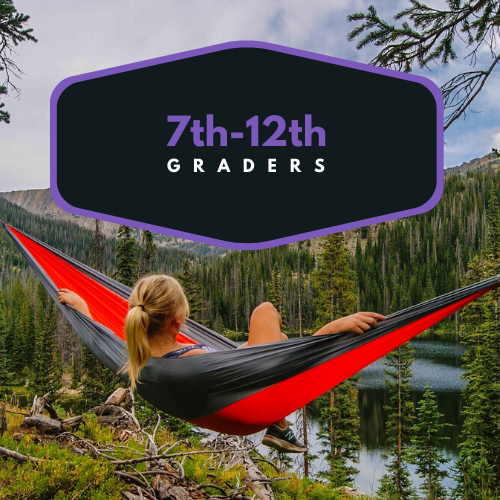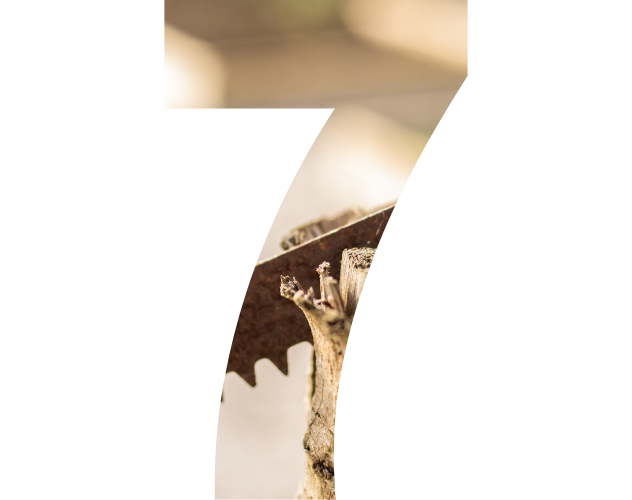Campers will learn progressive tool skills, such as kitchen blades, bow saws, pocketknives, and common household tools.
Start at the beginning and work until your grade level icon says, “CLICK HERE.”
Blade Safety
Follow Jason as he goes through the steps of using a blade safely. In this case, a carrot peeler. Read these steps then watch the video before picking up a blade:
Make sure your area is clear of people and things.
Make sure your knife or blade is sharp.
If you must pass the blade, be sure you pass it with the sharp end facing away from the person receiving it. Do not let go until they say “Thank you.”
Hold both the blade and the item you are cutting with a firm grip.
Be sure your fingers are out of the way. Either tuck your fingertips inwards or keep your blade at the far end of what you are cutting.
Veggie Peeler
As our Discoverers first begin to explore outdoor cooking, they learn how to use a vegetable peeler to make no-cook meals. Watch to learn how to use a vegetable peeler safely:
Knife Safety
Follow these rules to use a paring knife safely:
Ensure your space is clear, flat, and sturdy.
Make sure your paring knife is clean and sharp. Dull blades can make it harder to cut things, thus increasing the chance of an accident.
Firmly hold the paring knife by the handle, and use your other hand to firmly hold the object you are cutting.
Be sure to keep fingertips safely away from where you’re cutting, or tuck them under if you can.
Cut slowly and be sure to move your fingers back as you go.
Paring Knife
Paring knives are a great way to slice vegetables and other food items for a homemade meal. Read through the safety rules, then follow Jason as he shows us the proper way to hold and use a paring knife safely.
Saw Safety
Follow these rules to use your saw safely:
Check your tool before you begin. You want to make sure all screws are tightened and the blade is securely in place. Your blade should also be clean and sharp, no rust.
Check your attire. Be sure you are wearing closed-toed shoes in case your bow saw gets dropped or jerks away from what you’re cutting.
Check your wood to make sure it is in a stable position, and have a friend or two to hold it in place as you cut.
Remove the blade cover once you are ready to make your first cut. Cut with your dominant hand and place the other hand on the wood to hold it in place, but be sure it is far enough away from the blade to prevent any accidents. You also want to keep your body back from the blade as far as you can while still keeping control of the wood and the saw.
Use a back and forth motion sawing motion to cut the wood. Find your rhythm and it will go quickly!
Bow Saw
Bow Saws are great to use for many things, from cutting branches for your campfire to cutting planks of wood for projects. A little elbow grease goes a long way! Read through the saw safety rules and then listen as two of our campers teach you how to use a bow saw safely.
Pocketknife Safety
While learning this new skill is exciting, it is important to keep the following rules in mind when using your pocketknife:
Establish a safety circle
Open and close your knife with your fingers away from the blade
Close the knife before passing
Wait for “thank you” before letting go of the knife
Recheck your safety circle before you begin cutting
Keep your knife sharp
A pocketknife is a very useful camp tool. It can cut a rope, open a can and whittle a tent stake. But it’s useful only if you keep it clean and sharp. A dull knife can slip and get stuck, making it more dangerous to use.
Keep your knife sharp by using a whetstone. Some experts prefer a dry whetstone, while others use light mineral oil or water on the stone while they are sharpening. The choice depends on the type of stone and the preference of the sharpener. Check the sharpness by wiping the knife with a clean cloth and examining the edge in the sun or under a bright light. A dull cutting edge reflects the light and looks shiny. A sharp edge is so thin that it has no shine at all.
Pocketknives
Pocketknives have so many uses while outdoors. Join one of our campers to learn all about pocketknife safety, how to care for it, and how to put it into use while keeping all our fingers intact.
Tools
There are so many types of tools out there that can be used for many different applications. Join Mr. Nicole as he describes 5 common tools and demonstrates their uses.
Tool Safety
Hand tools are very useful for many common applications. Take a look at this great video that teaches us all about how to safely use hand tools.
Tool Practice
Now that you have learned more about tools, see if you can practice using a new tool. With an adult’s help, use your new skill to help build or repair something around your home. Remember to be patient with yourself as you’re still learning. We can’t wait to see what you build!
Would you like to try building a bookshelf? Hanging a picture? Tightening loose cupboard doors? Building a small camp chair? How about using the skills toward a service project, like building a “free library?”
With the assistance of an adult, search for instructions for how to best complete this task. With that adult supervising, get to work utilizing your skills to build something new! Remember to be safe and utilize all tool rules when building your new project.
Celebrate! Send us a picture or video of you completing a tool activity.
Let us know what you loved about the tool activities and what we can improve.
Return to the main Virtual Camp page to complete the next skill station, Friendship.























